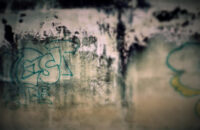Fire Damage Restoration On Concrete – Do You Need It?
 When it comes to fire damage restoration on concrete, it is primarily about maintenance and cleaning up soot and smoke residue off the walls – unless, of course, the damage is too extensive. Dried concrete is resistant to almost every weather effect in moderation.
When it comes to fire damage restoration on concrete, it is primarily about maintenance and cleaning up soot and smoke residue off the walls – unless, of course, the damage is too extensive. Dried concrete is resistant to almost every weather effect in moderation.
Most fires can’t damage concrete walls too much other than introducing a crack or allowing for carbon to accumulate in the irregularities of the walls. However, that paint (distemper or oil pain) on top is a different story.
Normally, concrete structures are resistant to fire damage, however, there are two conditions where fire may cause significant structural damage to your concrete property:
- Extreme temperatures may cause the concrete to start cracking and crumbling, but it still won’t fall, though. Commercial and residential fires would most likely weaken steel beams, but the flames won’t melt them. The rebar may break, though, depending on how much pressure is on the steel.
- Prolonged exposure to fire. The longer a steel beam is exposed to fire, the higher its temperature will get. It melts at about 2,700°F. A typical house fire burns at 1,500°F, which will take about an hour or longer to melt steel. The type of steel will also play a major role in determining how long the steel can withstand the fire.
Regardless, you can expect the concrete to crack and perhaps crumble from the corners when exposed to fire. However, that doesn’t mean that your walls or roof will be safe after the fire. Fire damage restoration for concrete can be quite extensive, and it can get quite messy.
Fire Damage Restoration on Concrete – What Really Happens
As mentioned above, the integrity of concrete will get severely impacted by fire, but the damage is nowhere near as bad as with drywall. In case of smaller fires where no cracks appear in the concrete, it often retains its strength, but we recommend that you have a fire marshal or fire damage restoration company evaluate the structure before you deem the structure habitable.
There are three primary reasons why concrete cracks when exposed to fire and heat.
- The bottom layer of concrete is exposed to a much higher temperature range than the one above. The differential expansion of these layers creates internal pressure, which needs to be released one way or another. The only option concrete has to release this is by cracking open.
- Concrete walls may have moisture in them, either because of a poor drying process or simply because of absorption from the environment. When superheated, the moisture evaporates, turning into steam. Steam expands and looks for a way out, increasing the pressure on the concrete and cracking it. This is why heated concrete (without direct fire) may start “smoking”.
- The steel bars or rebars within will start expanding because of the heat. Concrete will keep the bars in place for as long as possible until the expansion is too much, causing the concrete to crack.
At roughly 573°F, concrete starts reducing its compressive strength. At 1,000°F, this property is lost completely. This reduction in strength, expansion and contraction, steam, and rebar expanding will all combine to significantly affect the performance of concrete structures.
Smoke Damage Restoration From Concrete Structures
Smoke from fire damage can seep into even the smallest places, but the brunt of this smoke will get accumulated on the wall and ceiling directly above the source of the fire. Smoke particles will start collecting as dark, powdery matter (carbon residue) or soot.
The cracks resulting from a fire can be repaired by chiselling the cracks to their core and re-pouring concrete. Thankfully, cracks are very visible and can be taken care of easily. Smoke damage is a lot peskier. It can seep into almost every surface – even in your attic, despite the fire being in your basement, and it can present health risks long after a fire has ended.
Because of the composition of smoke, its particles tend to stick to each other and create a greasy layer on surfaces, hence making it extremely difficult to get rid of. But why does your room or the attic require smoke and fire damage restoration if the fire was in your basement?
This is because of smoke’s natural tendency to travel to cooler areas. It flows into every room of the property via diffusion.
While fire damage impacts the integrity of objects immediately, smoke damage manifests over the long term. This is true for structural damage and its impact on your health. When the burning particles are inhaled, it can result in burning your oesophagus and alveoli (lungs). It may also introduce foreign bodies into your lungs, which may cause cancer in the long run.
911 Restoration experts of Richmond can help you identify the extent of damage on property and the need for fire and smoke damage restoration. We offer free visual inspection to property owners 24/7, 365 days a year! So, give us a call and let us help!



